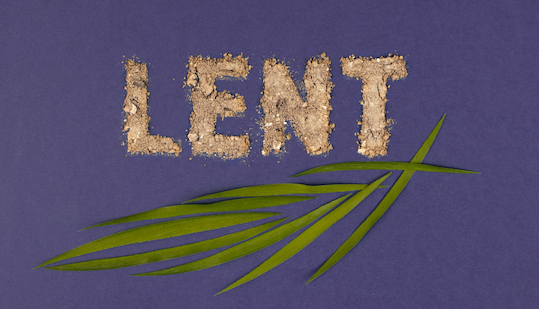Republished from the February/March 1998 Issue of Dovetail
The transition months between winter and spring are a time of waiting, of expecting, of looking forward to green grass and fragrant flowers. This time is itself an exciting and meaningful period in our interfaith family. My husband is Jewish and I am Christian. This season, we celebrate first a round of gaily festive holidays, including the pre-Lenten Mardi Gras free-for-all on Shrove Tuesday and the Jewish holiday of Purim. These raucous celebrations are followed closely this year by the much more solemn and reflective time of Holy Week and Easter, and intersecting with Passover.
Tension
Soon after the giddy festivities, each of our traditions encourages us to give something up, whether for the forty days of Lent or for the eight days of Passover. This year the first Seder of Passover falls on the evening of Good Friday, so there are special challenges for the dual-faith family— and special rewards. [This is a reference to the holidays in 1998. In 2023, Passover begins on the evening of Wednesday, April 5th and continues until Thursday, April 13th. Easter falls on Sunday, April 9th, which is the 5th night of Passover.]
Christians uncomfortable with celebration on that day might consider timing it in the Jewish fashion, from sunset Thursday to sunset Friday. Those still uneasy at eating meat on Good Friday can fashion a vegetarian seder, with matzo balls in tomato broth, for instance, and an entree based on an elegant fish dish. For Easter Sunday this year: matzo brei (matzos soaked in milk or water and egg and fried like pancakes) and colored eggs; have flourless chocolate cake for dessert at dinner.
Teaching
Celebration and solemnity, indulgence and denial are just some of the paradoxes that interfaith families learn to navigate with creativity and humor. Often our children lead the way, finding the links between our faiths. Certainly, the twentieth-century similarities between Easter and Passover are not lost on my preschooler: for both holidays, she gets to hunt for treats (dyed eggs and the afikomen), and it’s the only time of year in our high-cholesterol family when we get to eat hard-boiled eggs! For my well-adjusted daughter the similarities link us together as one family: This year she asked if we could have the Passover seder at the home of her aunt who happens to be a Methodist minister.

Despite these comfortable linkages in our interfaith family, the most difficult theological paradox of the year arises around Easter and Passover. In a theological sense, the “Spring Thing” far surpasses the “December Dilemma” in its difficulty of reconciliation for interfaith families. As a Christian, I can easily and honestly join my Jewish partner in his celebration of Passover. The seder happens in our home, and its format is designed to include questions and explanations of our family’s understanding of Judaism. This is one of the beauties of a family-based religion like Judaism. And, no matter what your faith background, everyone can get behind the idea of liberation from slavery.
It is much more difficult, theologically, and culturally, for my Jewish partner to join me in the celebration of Easter. First, it is a church-based holiday celebration that often seems out of our family’s control. Second, the point of the celebration, the resurrection of Jesus, is undeniably outside the realm of Jewish belief and tradition. When my Jewish husband agrees to accompany me to church on Easter Sunday, it is often with trepidation and guilt, magnified by the centuries-old association for Jews of Easter with pogroms and persecution, blood- libel and bloodshed. And these feelings have been reinforced in the sanctuary. Many an interfaith couple, ourselves included, has a story of making a well-intentioned trip to Easter Sunday services, only to be greeted with sermons that blame Jews for Jesus’s crucifixion or exclude from salvation anyone who does not believe in the actual physical resurrection of Jesus. Of course, for every such sermon, there is also a message by a more inclusive pastor, who focuses on the potential for rebirth and resurrection in our own lives today. But many Jewish/Christian families have not found a church in which they can hear such an uplifting Easter message.

This is one tension in an interfaith relationship that cannot be resolved. Perhaps we interfaith couples, having chosen to live together with our two distinct religious traditions, will have to accept that this is one of the times when our beliefs cannot overlap, when we can only accept, respect, and celebrate the deep emotions and expectations of our partners for the holidays of their traditions. Perhaps the best we can do is use the tension we feel as fodder for growth and increased understanding.
In this time of visible transition between winter and spring, we are reminded again and again that there is a span of time larger than our own lives. Shrove Tuesday, Purim, Easter, and Passover remind us that we are all part of a historical human chain that stretches back to Moses, Esther, and Jesus. As we wait for the snow to melt and the crocuses to bloom, we have separate but common cause to celebrate gleefully and to reflect with solemnity—together.
See our calendar to celebrate the Spring holidays of Easter and Passover with IFFP.



